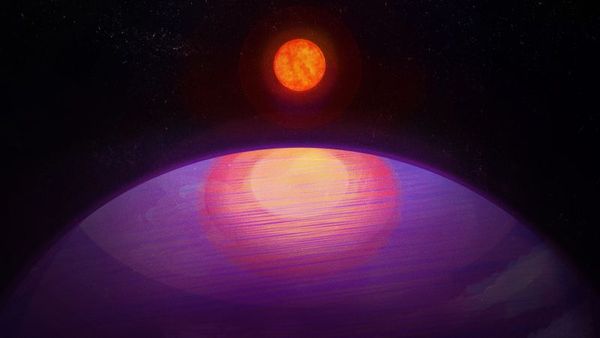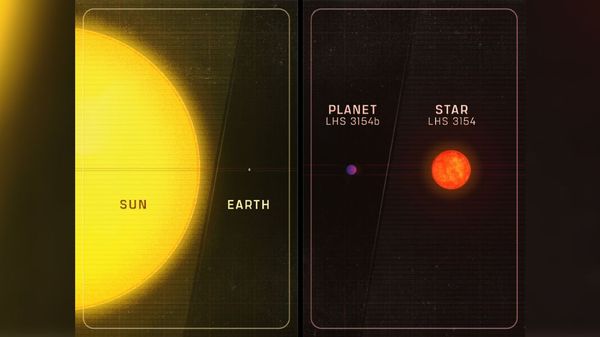A recent discovery in the field of astronomy has left scientists questioning their understanding of planet formation. Astronomers have detected an exoplanet orbiting an ultracool M-dwarf star called LHS 3154, which is significantly smaller and cooler than our sun. What makes this finding even more intriguing is that the exoplanet, named LHS 3154b, is about the size of Neptune and more than 13 times the mass of Earth. It completes one orbit around its star every 3.7 Earth days, making it the most massive known planet in close proximity to one of the coldest, low-mass stars in the universe.
The discovery of this unexpected exoplanet challenges the current theories of planet formation. Scientists were surprised to find such a massive planet orbiting a star that is much smaller and less massive than expected. Small M dwarf stars like LHS 3154 are known for having small, rocky planets rather than gas giants. The planet-forming disk around LHS 3154 was not expected to contain enough solid mass to create a planet of this size. This discovery underscores our limited understanding of the vast universe and calls for a reevaluation of our knowledge.
Exploring the Habitable Zone
LHS 3154b orbits a star located about 51 light-years away from our sun. Its discovery was made possible by the Habitable Zone Planet Finder (HPF), a state-of-the-art instrument installed on the Hobby-Eberly Telescope at the McDonald Observatory in Texas. The HPF was specifically designed to detect planets within the habitable zone of small, cool stars. The habitable zone refers to the region around a star where a planet can maintain a temperature suitable for liquid water and, potentially, life.
Compared to larger stars, small stars have lower surface temperatures. This allows planets to orbit them at closer distances while still supporting essential elements like water. The gravitational interaction between planets and their stars causes a detectable wobble, which the HPF can observe through infrared light. To put it simply, the closer a planet is to its cool star, the warmer it can be, comparable to seeking warmth from a campfire.
Challenging Current Theories
According to a study conducted by a team of scientists led by Suvrath Mahadevan from Penn State, the planet LHS 3154b presents a unique challenge to current planet formation theories. It is believed to have a dense core requiring a greater amount of solid material in the planet-forming disk than what was expected to be present around the star. The researchers estimate that the disk’s dust content would need to be at least ten times greater than the typical amount found around low-mass stars, based on their modeling and analysis.
While a few massive planets have been discovered orbiting low-mass stars, their orbital periods are much longer, and they do not orbit as closely to their stars as LHS 3154b does. This finding presents an extraordinary opportunity to put existing theories to the test and gain a deeper understanding of how planets form. The discovery of LHS 3154b aligns perfectly with the purpose of the HPF, which was designed to unravel the mysteries of planet formation around the most common stars in our galaxy.
In conclusion, this groundbreaking discovery challenges our current understanding of planet formation and highlights the vastness of the universe, reminding us just how much more there is to learn. By pushing the boundaries of knowledge, scientists are paving the way for new discoveries and expanding our understanding of the cosmos.






